History
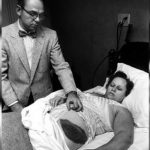 When most people think of a meteor or meteorite hitting the earth, they think of the complete destruction of our planet, because that is the image portrayed by the movies, but the reality is that the earth gets hit quite a bit, and the effects are far from disastrous. What is far more unusual, and in reality, almost non existent, is the probability of a person getting hit by a meteorite, in fact, there may only be one known case of that at all.
When most people think of a meteor or meteorite hitting the earth, they think of the complete destruction of our planet, because that is the image portrayed by the movies, but the reality is that the earth gets hit quite a bit, and the effects are far from disastrous. What is far more unusual, and in reality, almost non existent, is the probability of a person getting hit by a meteorite, in fact, there may only be one known case of that at all.
The Sylacauga meteorite fell on November 30, 1954, at 12:46 local time in Oak Grove, Alabama, near Sylacauga. It is commonly called the Hodges meteorite because a fragment of it struck Ann Elizabeth Fowler Hodges (1920–1972). It is thought that Hodges is the only person ever hit by a meteorite, and the meteorite, while officially named the Sylacauga meteorite, was nicknamed the Hodges meteorite. As the meteorite made its way to Earth, the 8 1/2 pound grapefruit-sized chunk of space rock crashed through the roof of Hodges’ home, hit large wooden console radio, and ricocheted into her side and hand, while she napped on a couch. It left a nasty bruise, which looks eerily like a meteorite itself. It was the first documented extraterrestrial object to have injured a human being. The 34-year-old woman was badly bruised on one side of her body, but was able to walk. The event received worldwide publicity.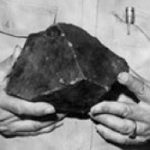
The meteor made a fireball visible from three states as it streaked through the atmosphere, even though it fell early in the afternoon. There were also indications of an air blast, as witnesses described hearing “explosions or loud booms”. The meteorite was confiscated by the Sylacauga police chief who then turned it over to the United States Air Force. Both Hodges and her landlord, Bertie Guy, claimed the rock, Guy’s claim being that it had fallen on her property. There were offers of up to $5,000 for the meteorite. Hodges and Bertie Guy settled, with Hodges paying $500 for the rock. However, by the time it was returned to Hodges, over a year later, public attention had diminished, and they were unable to then find a buyer. Ann Hodges was uncomfortable with the public attention and the stress of the dispute over ownership of the meteorite, so she donated it to the Alabama Museum of Natural History in 1956. The day after the fall, local farmer Julius McKinney came upon the second-largest fragment from the same meteorite. An Indianapolis-based lawyer purchased it for the Smithsonian Institution. The McKinney family was able to use the money to purchase a car and a house.
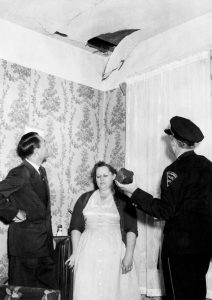
Upon the entry into the atmosphere, the Sylacauga meteorite fragmented into at least 3 pieces…the Hodges fragment 8.5 pounds that struck Ann Elizabeth Hodges. The McKinney fragment 3.7 pounds was found the next day December 1, 1954 by Julius Kempis McKinney, an African-American farmer who sold the meteorite fragment he found to purchase a car and a house. A third fragment is believed to have impacted somewhere near Childersburg northwest of Oak Grove. The meteoroid came in on the sunward side of the Earth, so when it hit, it had passed the perihelion and was traveling outward from the Sun. Considering the orbit estimations, the best candidate as parent body is 1685 Toro. The Sylacauga meteorite is classified as an ordinary chondrite of H4 group. I don’t suppose Ann Elizabeth Hodges cared what kind it was, just that it almost killed her.
 Known as Site R, Raven Rock Mountain Complex is a deep underground facility approved for construction by President Harry S Truman in 1950. The plan was for it to be a relocation site for the Pentagon in times of national emergency. To build the site, they workers had to blast out one half a million cubic yards of greenstone granite rock. The super-hard granite was secretly blasted out and hauled away over a period of ten months, to build five separate three-story buildings deep inside the mountain located along the border between Pennsylvania and Maryland, in Adams County, Pennsylvania. It operates under a number of…almost code names, Site R, AJCC: Alternate Joint Communications Center, ANMCC: Alternate National Military Command Center, NMCC-R: National Military Command Center – Raven Rock, USAG-RR: U.S. Army Garrison – Raven Rock, the Underground Pentagon, the Little Pentagon, the Backup Pentagon, the Rock, and for the old-timers: Harry’s Hole. All are interesting nicknames, for sure.
Known as Site R, Raven Rock Mountain Complex is a deep underground facility approved for construction by President Harry S Truman in 1950. The plan was for it to be a relocation site for the Pentagon in times of national emergency. To build the site, they workers had to blast out one half a million cubic yards of greenstone granite rock. The super-hard granite was secretly blasted out and hauled away over a period of ten months, to build five separate three-story buildings deep inside the mountain located along the border between Pennsylvania and Maryland, in Adams County, Pennsylvania. It operates under a number of…almost code names, Site R, AJCC: Alternate Joint Communications Center, ANMCC: Alternate National Military Command Center, NMCC-R: National Military Command Center – Raven Rock, USAG-RR: U.S. Army Garrison – Raven Rock, the Underground Pentagon, the Little Pentagon, the Backup Pentagon, the Rock, and for the old-timers: Harry’s Hole. All are interesting nicknames, for sure.
Once you are inside, you would not really know that you are underground, because, other than no outside  windows, the buildings look like any other office building. The underground complex has roads and perking areas that are big enough to accommodate trucks and buses. The facility is completely self-sufficient, boasting two power plants for electricity, multiple underground water reservoirs and a highly sophisticated ventilation system. It also has a medical and dental clinic, fire department, post office, dining facility, snack bar, dormitories, chapel, barbershop, fitness center, bowling alley, and even a Starbucks. It can accommodate 3,000 people in the event of an emergency, and can operate for at least 30 days in a “buttoned-up” position. Basically the facility is a small city.
windows, the buildings look like any other office building. The underground complex has roads and perking areas that are big enough to accommodate trucks and buses. The facility is completely self-sufficient, boasting two power plants for electricity, multiple underground water reservoirs and a highly sophisticated ventilation system. It also has a medical and dental clinic, fire department, post office, dining facility, snack bar, dormitories, chapel, barbershop, fitness center, bowling alley, and even a Starbucks. It can accommodate 3,000 people in the event of an emergency, and can operate for at least 30 days in a “buttoned-up” position. Basically the facility is a small city.
In the event of a war situation, the United States must be able to have a Continuity of Operations Plan (COOP) for the Office of the Secretary of Defense and the Joint Staff…basically a blueprint for how the government would re-position itself, if a major catastrophe strikes. Should the country find itself in such peril Senior leaders would be flown in by helicopter from the Pentagon and DOD emergency relocation teams all participate in real-life scenarios which test the alert and notification procedures along with the reception, staging, onward  movement, and integration (RSOI) procedures. These include the COOP transportation plans, Site R hasty access procedures, and the integration of mission essential functions within the operating routine of the alternate site, the backup Pentagon. Defense communications and planning would allegedly be handled at the Raven Rock Mountain Complex, but the structure of such a strategy has been hotly debated. Some sites on the internet had posted a “virtual tour” of Site R, but it is not the real site, other than possibly the pictures of the original work being done. Sites like this, that have national security as their top priority, are not something that is usually open to the public for viewing.
movement, and integration (RSOI) procedures. These include the COOP transportation plans, Site R hasty access procedures, and the integration of mission essential functions within the operating routine of the alternate site, the backup Pentagon. Defense communications and planning would allegedly be handled at the Raven Rock Mountain Complex, but the structure of such a strategy has been hotly debated. Some sites on the internet had posted a “virtual tour” of Site R, but it is not the real site, other than possibly the pictures of the original work being done. Sites like this, that have national security as their top priority, are not something that is usually open to the public for viewing.
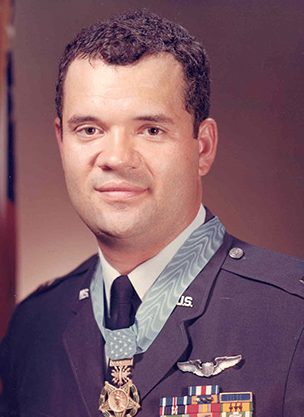 Our instincts tell us not to leave a man down, or behind. That doesn’t just apply just to military personnel. Nevertheless, military personnel have had that concept ingrained into their being…probably more so than the rest of us. It is a code for them…never leave a man behind…whenever they have any say about it, they don’t. 1st Lieutenant James P Fleming was no different. In fact, Fleming was exceptional. Fleming was a helicopter pilot during the Vietnam War. On November 26, 1968, Fleming and four other UH-1F helicopter pilots were returning to their base at Duc Co, South Vietnam, for refueling and rearming when an emergency call for help was received from a Special Forces reconnaissance team.
Our instincts tell us not to leave a man down, or behind. That doesn’t just apply just to military personnel. Nevertheless, military personnel have had that concept ingrained into their being…probably more so than the rest of us. It is a code for them…never leave a man behind…whenever they have any say about it, they don’t. 1st Lieutenant James P Fleming was no different. In fact, Fleming was exceptional. Fleming was a helicopter pilot during the Vietnam War. On November 26, 1968, Fleming and four other UH-1F helicopter pilots were returning to their base at Duc Co, South Vietnam, for refueling and rearming when an emergency call for help was received from a Special Forces reconnaissance team.
While en route, they got a call that a six-man Special Forces team was pinned down by a large, hostile force not far from a river bank. The homebound force of two gunships and three transport helicopters immediately changed course and sped to the area without refueling. As the gunships descended to attack the enemy positions, one was hit and downed. The remaining gunship made several passes, rapidly firing with its miniguns, but the intense 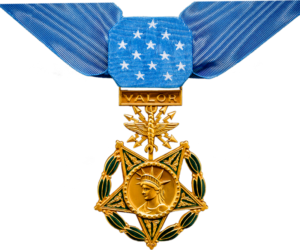 return fire from enemy machine guns continued. Finally, low on fuel, the helicopters were being forced to leave and return to base.
return fire from enemy machine guns continued. Finally, low on fuel, the helicopters were being forced to leave and return to base.
Lieutenant Fleming alone remained as the only transport helicopter left. He descended over the river to evacuate the team. Upon arrival, he found the area unsafe for landing because of the dense foliage, so he hovered just above the river with his landing skids braced against the bank. The lone gunship continued its strafing runs, but heavy enemy fire prevented the team from reaching the helicopter. Fleming’s leader advised him to withdraw. After pulling away, Lieutenant Fleming decided to make another rescue attempt before completely exhausting his fuel. He dropped down to the same spot and found that the team had managed to move closer to the river bank. The men dashed out and clambered aboard as bullets pierced the air, some 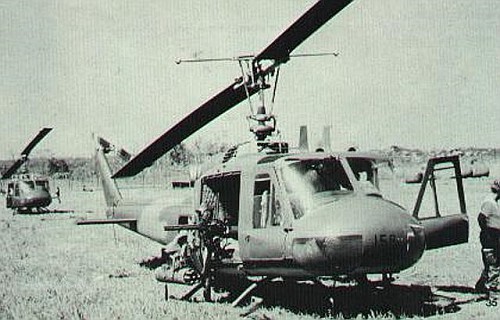 smashing into the helicopter. The rescue craft and the gunship then returned to Duc Co where it was discovered that they were nearly out of fuel.
smashing into the helicopter. The rescue craft and the gunship then returned to Duc Co where it was discovered that they were nearly out of fuel.
It was truly a miraculous rescue, in which not a single life was lost. Lieutenant Fleming was awarded the Medal of Honor for saving the lives of the special forces team that day. For his actions, Fleming received the Medal of Honor in May, 1970. Fleming remained in the Air Force serving a total of 30 years, becoming a colonel and a member of the Officer Training School staff at Lackland Air Force Base, Texas, before his retirement in 1996 at the rank of Colonel.
 The Indian Territory, which is now Oklahoma, in 1875, was populated by cattle and horse thieves, whiskey peddlers, and bandits who sought refuge in the untamed territory that was free of a “White Man’s Court.” There was one court with jurisdiction over Indian Territory was the U.S. Court for the Western District of Arkansas located in Fort Smith, Arkansas, which was situated on the border of Western Arkansas and Indian Territory. Judge Isaac Parker, who was often called the “Hanging Judge,” from Fort Smith, Arkansas ruled over the lawless land of Indian Territory in the late 1800s. He was determined to stop the pollution of the Indian Territory that was the outlaws who thought they could outrun the law.
The Indian Territory, which is now Oklahoma, in 1875, was populated by cattle and horse thieves, whiskey peddlers, and bandits who sought refuge in the untamed territory that was free of a “White Man’s Court.” There was one court with jurisdiction over Indian Territory was the U.S. Court for the Western District of Arkansas located in Fort Smith, Arkansas, which was situated on the border of Western Arkansas and Indian Territory. Judge Isaac Parker, who was often called the “Hanging Judge,” from Fort Smith, Arkansas ruled over the lawless land of Indian Territory in the late 1800s. He was determined to stop the pollution of the Indian Territory that was the outlaws who thought they could outrun the law.
Judge Isaac Parker was born in a log cabin outside Barnesville, Belmont County, Ohio on October 15, 1838. The youngest son of Joseph and Jane Parker. As a boy, Isaac helped out on the farm, but never really cared for that type of work. He attended the Breeze hill primary school and then the Barnesville Classical Institute. Knowing he wanted more, he decided to go for a higher education. To help pay for it, he taught students in a country primary school. When he was 17 he decided to study law, his legal training consisting of a combination of apprenticeship and self study. Reading law with a Barnesville attorney, he passed the Ohio bar exam in 1859 at the age of 21. During this period of his life, he met and married Mary O’Toole and the couple had two sons, Charles and James. Over the years, Parker built a reputation for being an honest lawyer and a much respected leader of the community.
After Parker passed the bar, he decided to head west, ending up in Saint Joseph, Missouri a bustling Missouri River port town. He went to work for his uncle, D.E. Shannon, becoming a partner in the Shannon and Branch legal firm. By 1861, he was working on his own in both the municipal and county criminal courts. In April of 1861, he won the election as City Attorney. He was re-elected to the post for the next two years. In 1864, 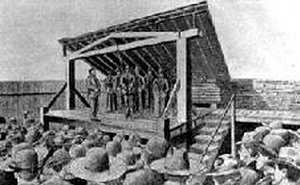 Isaac Parker ran for county prosecutor of the Ninth Missouri Judicial District and in the fall of that same year, he served as a member of the Electoral College, casting his vote for Abraham Lincoln. During a political career that included a six-year term as judge of the Twelfth Missouri Circuit in 1868, Parker would soon gain the experience that he would later use as the ruling Judge over the Indian Territory.
Isaac Parker ran for county prosecutor of the Ninth Missouri Judicial District and in the fall of that same year, he served as a member of the Electoral College, casting his vote for Abraham Lincoln. During a political career that included a six-year term as judge of the Twelfth Missouri Circuit in 1868, Parker would soon gain the experience that he would later use as the ruling Judge over the Indian Territory.
After the Civil War, the number of outlaws had grown, wrecking the relative peace of the five civilized tribes that lived in Indian Territory. By the time Parker arrived at Fort Smith, the Indian Territory had become known as a very bad place, where outlaws thought the laws did not apply to them and terror reigned. Parker replaced Judge William Story, whose tenure had been marred by corruption, after arriving in Fort Smith on May 4, 1875. At the age of 36, Judge Parker was the youngest Federal judge in the West. Holding court for the first time on May 10, 1875, eight men were found guilty of murder and sentenced to death. Judge Parker held court six days a week, often up to ten hours each day and tried 91 defendants in his first eight weeks on the bench. He was determined to clean up the Indian Territory, single handedly if necessary. In that first summer, eighteen persons came before him charged with murder and 15 were convicted. Eight of them were sentenced to die on the gallows on September 3, 1875. However, only six would be executed as one was killed trying to escape and a second had his sentence commuted to life in prison because of his young age.
The day of the September 3, 1875 hanging was a media circus, and because of all the attention, everyone knew that the once corrupt court was functioning properly again. Parker’s critics dubbed him the “Hanging Judge” and called his court the “Court of the Damned.” They thought Judge Parker was too harsh. The Fort 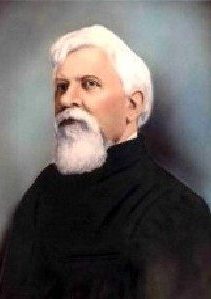 Smith Independent was the first newspaper to report the event on September 3, 1875 with the large column heading reading: “Execution Day!!” Other newspapers around the country reported the event a day later. These press reports shocked people throughout the nation. “Cool Destruction of Six Human Lives by Legal Process” screamed the headlines. Of the six felons, three were white, two were Native American and one was black. When the preliminaries were over, the six were lined up on the scaffold while executioner George Maledon adjusted the nooses around their necks. The trap was sprung all six died at once at the end of the ropes. The event solidified Judge Parker’s nickname for all time. In 21 years on the bench, Judge Parker tried 13,490 cases, 344 of which were capital crimes. 9,454 cases resulted in guilty pleas or convictions. Over the years, Judge Parker sentenced 160 men to death by hanging, though only 79 of them were actually hanged. The rest died in jail, appealed or were pardoned. Judge Parker died on November 17, 1896.
Smith Independent was the first newspaper to report the event on September 3, 1875 with the large column heading reading: “Execution Day!!” Other newspapers around the country reported the event a day later. These press reports shocked people throughout the nation. “Cool Destruction of Six Human Lives by Legal Process” screamed the headlines. Of the six felons, three were white, two were Native American and one was black. When the preliminaries were over, the six were lined up on the scaffold while executioner George Maledon adjusted the nooses around their necks. The trap was sprung all six died at once at the end of the ropes. The event solidified Judge Parker’s nickname for all time. In 21 years on the bench, Judge Parker tried 13,490 cases, 344 of which were capital crimes. 9,454 cases resulted in guilty pleas or convictions. Over the years, Judge Parker sentenced 160 men to death by hanging, though only 79 of them were actually hanged. The rest died in jail, appealed or were pardoned. Judge Parker died on November 17, 1896.

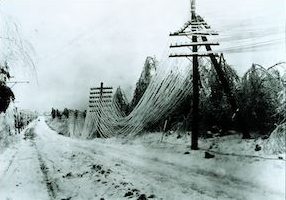 As winter arrived in Coburn Creek, West Virginia in 1950, a storm of epic proportions was about to set some serious records. From November 22 to 30, a slow-moving, powerful storm system dumped heavy snow across much of the central Appalachians. The storm would be remembered as as “The Great Appalachian Storm of 1950,” and it blanketed areas from western Pennsylvania southward deep into West Virginia with over 30 inches of snow. Several locations even received more than 50 inches of snow. Coburn Creek, West Virginia, reported the greatest snowfall total…a staggering 62 inches. Most towns can be shut own with 24 inches, so 62 inches was unthinkable. There is no way a car can get through that, in fact it will take hours to get a snowplow through it. For all intents and purposes, much of the Appalachian Mountains, and especially the Coburn Creek area were at a standstill.
As winter arrived in Coburn Creek, West Virginia in 1950, a storm of epic proportions was about to set some serious records. From November 22 to 30, a slow-moving, powerful storm system dumped heavy snow across much of the central Appalachians. The storm would be remembered as as “The Great Appalachian Storm of 1950,” and it blanketed areas from western Pennsylvania southward deep into West Virginia with over 30 inches of snow. Several locations even received more than 50 inches of snow. Coburn Creek, West Virginia, reported the greatest snowfall total…a staggering 62 inches. Most towns can be shut own with 24 inches, so 62 inches was unthinkable. There is no way a car can get through that, in fact it will take hours to get a snowplow through it. For all intents and purposes, much of the Appalachian Mountains, and especially the Coburn Creek area were at a standstill.
The cold front was massive, with frigid air stretching from the Northeast into the Ohio Valley and all the way down into the far Southeast. Temperatures fell to 22°F in Pensacola, Florida, 5°F in Birmingham, Alabama, 3°F in Atlanta, Georgia, and 1°F in Asheville, North Carolina. This record cold led to widespread crop damage, particularly in Georgia and South Carolina. In the north, intense winds associated with the storm caused extensive tree damage, power outages, and coastal flooding in New England. In New Hampshire, Mount Washington observed gusts as high as 160 mph. And, onshore winds along the coast caused extreme high tides and flooding in New Jersey and Connecticut. The storm was fairly short lived, and the temperatures quickly returned to normal in the first week of December 1950, bringing a whole new problem with them. The rise in temperatures led to a fast snowmelt, flooding several tributaries and major rivers. The Ohio River reached 28.5 feet, 4 feet above flood stage, in Pittsburgh. In Cincinnati, it reached 56 feet, also 4 feet above flood stage.
At the time, the Great Appalachian Storm of 1950 was one of the costliest storms on record, and it contributed to at least 160 deaths. Overall, on the Regional Snowfall Index (RSI) this powerful storm ranked as a Category 5…the worst category, for the Ohio Valley, and a Category 4 for the Northeast of the 212 storms our scientists have analyzed for the region. The RSI value of 34.7 securely locks its first place rank, well above the 24.6 RSI value second worst storm in March 1993. Only four Category 5 storms have impacted the Ohio Valley since 1900, so it is highly uncommon. During the storm, Pittsburgh, Pennsylvania, received 30.2 inches of snow, and both Erie, Pennsylvania, and Youngstown, Ohio, received more than 28 inches of snow. Across the region, over 18 inches of snow affected more than 6.1 million people. Such high snowfall totals affecting so many people largely contributed to the storm’s high ranking on the RSI scale.
In the Northeast region, the Great Appalachian Storm ranks as the ninth worst storm to impact the area out of the 203 analyzed. That fact seems surprising given the severity of the storm. I would have expected a much higher ranking. Over 30 inches of snow affecting 1.3 million people in the region largely contributed to the regional RSI value of 14.5. With that value, it ranks just behind the more recent February 2003, February 2010, and January 2016 storms. The late February snowstorm of 1969 remains the strongest storm to hit the 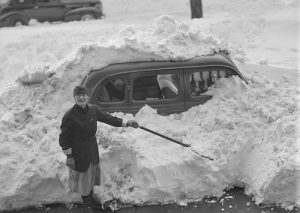
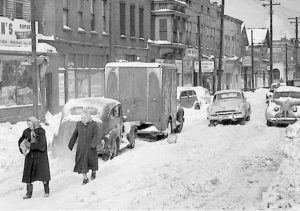 Northeast, with an RSI value of 34.0 making it a Category 5 or “Extreme” event. The March 1993 “Storm of the Century” remains the second strongest snowstorm to hit the Northeast, with an RSI value of 22.1 also making it a Category 5 event. As I look out my window at the light snow falling, I find myself feeling grateful that this storm is not expected to be anything like the Great Appalachian Storm of 1950.
Northeast, with an RSI value of 34.0 making it a Category 5 or “Extreme” event. The March 1993 “Storm of the Century” remains the second strongest snowstorm to hit the Northeast, with an RSI value of 22.1 also making it a Category 5 event. As I look out my window at the light snow falling, I find myself feeling grateful that this storm is not expected to be anything like the Great Appalachian Storm of 1950.
 For a number of years, my husband, Bob and I have dragged ourselves out of bed to jump into the Black Friday shopping,to get a head start on our Christmas shopping. Our morning started with a stop for much needed coffee, and a quick look at the ads to see where to start our shopping. While a lot of people have told us that we are crazy to enjoy this tradition, we really enjoyed it…until the stores changed it. Call me a traditionalist, but i don’t like the idea of shopping on Thanksgiving. That is a day to spend with family, and I see no sense in having the stores open at all. The people who are forced to work to keep the stores open, should be spending that time with their families, but instead they are working and I will not go out and shop when it means that those people are not able to spend Thanksgiving with their families, and that isn’t fair to them or their families.
For a number of years, my husband, Bob and I have dragged ourselves out of bed to jump into the Black Friday shopping,to get a head start on our Christmas shopping. Our morning started with a stop for much needed coffee, and a quick look at the ads to see where to start our shopping. While a lot of people have told us that we are crazy to enjoy this tradition, we really enjoyed it…until the stores changed it. Call me a traditionalist, but i don’t like the idea of shopping on Thanksgiving. That is a day to spend with family, and I see no sense in having the stores open at all. The people who are forced to work to keep the stores open, should be spending that time with their families, but instead they are working and I will not go out and shop when it means that those people are not able to spend Thanksgiving with their families, and that isn’t fair to them or their families.

When the stores started their “Black Friday” sales on Thanksgiving Day, it also eliminated the need to get up early on Friday to stand out in the cold and wait for the opening of the store, so you could try to be the first one to get in and get those “must have” gifts, that were on sale, starting at 6:00 in the morning. With the sale starting on Thursday, I would rather use the day to sleep in, and…maybe go shopping later in the day. I guess that we have just become disenchanted by the whole “Black Friday” event, because it starts on Thursday…and even on Wednesday in some stores, so that basically we are seeing the death of Black Friday. These days there are no crowds, even at the “Early Bird Sale.” If no one is rushing into the stores to buy, why should I get up at 4:00 in the morning to get there first?
Strangely, it seems like the sale items aren’t even that spectacular. I suppose there might be a few items that  are must haves, but nobody seems to be rushing out to buy those, and the stores seem to have more than enough of them to go around. Suddenly, black Friday shopping is just like any other day, except that I refuse to go shopping on Thanksgiving, because that is just wrong. I’m sure there are those out there who do shop on Thanksgiving, but I have too many family members who have had to work on thanksgiving because the store they work in is pen that day. They missed out on that time with their families, because the stores thought it would bring in a few dollars more. To those stores I say…no thanks, I’ll wait until Friday, or better yet…shop online!! I won’t be part of the complete disregard, by the stores, of the need for their employees to have family time.
are must haves, but nobody seems to be rushing out to buy those, and the stores seem to have more than enough of them to go around. Suddenly, black Friday shopping is just like any other day, except that I refuse to go shopping on Thanksgiving, because that is just wrong. I’m sure there are those out there who do shop on Thanksgiving, but I have too many family members who have had to work on thanksgiving because the store they work in is pen that day. They missed out on that time with their families, because the stores thought it would bring in a few dollars more. To those stores I say…no thanks, I’ll wait until Friday, or better yet…shop online!! I won’t be part of the complete disregard, by the stores, of the need for their employees to have family time.
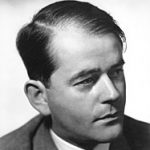
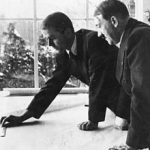 As the chief architect and minister for armaments and war production, Albert Speer designed many of the great buildings that Hitler craved. Hitler loved having the very best. Hitler was always impressed by academic credentials and any kind of artistic or technical talent, so he made Speer his personal architect. Albert Speer was born March 19, 1905, in Mannheim, Germany. At the age of 22, he received his architectural license, having studied at three German technical schools. He became an ardent Nazi after hearing Hitler speak at a rally in late 1930, and joined the party in January 1931. It was his decision to become a Nazi that gave him the opportunity to be noticed by Hitler.
As the chief architect and minister for armaments and war production, Albert Speer designed many of the great buildings that Hitler craved. Hitler loved having the very best. Hitler was always impressed by academic credentials and any kind of artistic or technical talent, so he made Speer his personal architect. Albert Speer was born March 19, 1905, in Mannheim, Germany. At the age of 22, he received his architectural license, having studied at three German technical schools. He became an ardent Nazi after hearing Hitler speak at a rally in late 1930, and joined the party in January 1931. It was his decision to become a Nazi that gave him the opportunity to be noticed by Hitler.
It was the fact that he now worked for Hitler, that gave him the power he craved for himself. Hitler began a massive Berlin building program. Among the projects the Fuhrer entrusted Speer with was the design of the parade grounds for the Nuremberg Party Congress in 1934, which Leni Riefienstahl made famous in her famous propaganda film Triumph of the Will. As minister of armaments and munitions, Speer’s job description expanded to include not only armament production and transportation, but also the direction of raw material use and finally the conscription of slave labor, culled from concentration camps, for war material production. On this day, November 21, 1941, Speer approached Hitler, and asked for 30,000 Soviet prisoners to be slave labor for his projects,telling Hitler that these slave laborers would come in handy for his “new” Berlin. Speer wanted to begin construction even as the war waged. Despite the drain on resources Hitler agreed. Speer beguiled the Fuhrer with models of a Great Hall for the Chancellery and a grand office for Goering. I find it strange to think that someone finally pulled a few things over on Hitler, who always seemed to have the upper hand.
The program was going well, but the times were not in Speer’s favor, or Hitler’s. The war turned against Nazi Germany, the rebuilding plans were scrapped. When the war was over, Hitler was dead by his own hand, and Speer was tried as a war criminal at Nuremberg, the site of his grand parade, and sentenced to 20 years in prison for his role in the Nazi regime, principally for the use of forced labor. Despite repeated attempts to gain early release, he served his full sentence, most of it at Spandau Prison in West Berlin. Following his release in 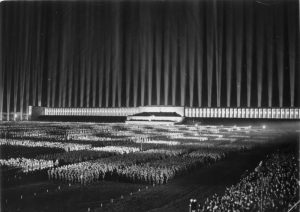
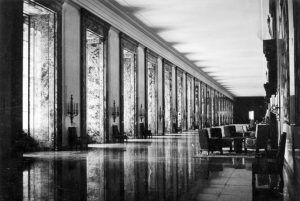 1966, Speer published two bestselling autobiographical works, Inside the Third Reich and Spandau: The Secret Diaries, detailing his close personal relationship with Hitler, and providing readers and historians with a unique perspective on the workings of the Nazi regime. He wrote a third book, Infiltration, about the SS. Speer died of a stroke in 1981 while on a visit to London.
1966, Speer published two bestselling autobiographical works, Inside the Third Reich and Spandau: The Secret Diaries, detailing his close personal relationship with Hitler, and providing readers and historians with a unique perspective on the workings of the Nazi regime. He wrote a third book, Infiltration, about the SS. Speer died of a stroke in 1981 while on a visit to London.

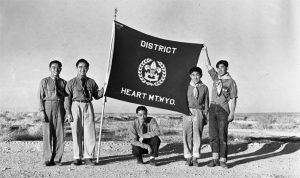 In the middle of a war, the people of a nation become concerned about anyone who might potentially be the enemy, especially if they are living inside the country’s borders. It is really a natural reaction to enemy personnel. After the Japanese attacked Pearl Harbor, the United states became quite concerned about the Japanese immigrants in our country, whether they were here legally or not. Much of the immigration to the United States from Japan began in 1884, when thousands of Japanese arrived in Hawaii to work the sugar cane fields. In the wake of the 1882 Chinese Exclusion Act, which drastically restricted Chinese immigration, Japanese people began arriving and began to prosper and started small businesses or became farmers. Most of them settled along the West Coast, meaning roughly 13,000 people of Japanese descent lived in the Intermountain West prior to World War II. The attack on Pearl Harbor, heightened the level of concern about those people.
In the middle of a war, the people of a nation become concerned about anyone who might potentially be the enemy, especially if they are living inside the country’s borders. It is really a natural reaction to enemy personnel. After the Japanese attacked Pearl Harbor, the United states became quite concerned about the Japanese immigrants in our country, whether they were here legally or not. Much of the immigration to the United States from Japan began in 1884, when thousands of Japanese arrived in Hawaii to work the sugar cane fields. In the wake of the 1882 Chinese Exclusion Act, which drastically restricted Chinese immigration, Japanese people began arriving and began to prosper and started small businesses or became farmers. Most of them settled along the West Coast, meaning roughly 13,000 people of Japanese descent lived in the Intermountain West prior to World War II. The attack on Pearl Harbor, heightened the level of concern about those people.
It was decided that, because their loyalties could not positively be confirmed, the Japanese immigrants needed to be rounded up and put in concentration camps. I suppose this might have seemed similar to what the Germans did to the Jewish people, but the Japanese people were not murdered in the camps, like the Jews were. And so it came to be that the people of Japanese descent from Oregon, Washington and California were incarcerated at the Heart Mountain Relocation Center in Park County, Wyoming, by the executive order of President Franklin Roosevelt. The prisoners were held at the camp from August 12, 1942 to November 10, 1945, which was actually two months after the end of the war with Japan. The camp was populated with 10,000 people at its largest, making it the third largest town in the state at the time.
I have tried to imagine what it must have been like for those Japanese immigrants to be held in the Heart Mountain Relocation Center for as much as 2 years and 3 months. Of course, the illegal immigrants of our time immediately came to my mind, but there is a difference between these people and the illegal immigrants of today. These people were here legally, and most of them had already become citizens. Unfortunately, that did not calm the worried minds of the rest of the people of the United States. Our nation had been attacked, and the attackers looked just like the Japanese immigrants. Precautions had to be taken. I’d like to think that if it were me, in that position, that I would understand why this was happening, but I’m not so sure I would. After all, these people were not criminals. They were hard working Americans, and yet they were for a time…the enemy, or possibly the enemy.
Unfortunately, like many prior immigrant groups, the Japanese faced discrimination. Things aren’t always fair, and people aren’t always treated properly. Starting in the early 20th century, Japanese immigrants, as well as Chinese immigrants, were targeted by Alien Land Laws in western states including Wyoming. These laws prevented the Asian immigrants from buying land. In 1924, the United States Congress passed the Asian Exclusion Act, which all but cut off new immigration from Asia. In response, Japanese Americans formed organizations such as the Japanese American Citizens’ League to help address their shared challenges. Despite 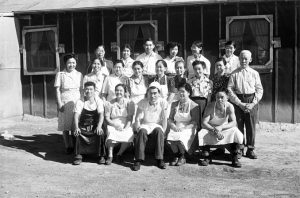 the attempts of Japanese Americans to fit in, some people expressed ongoing skepticism regarding the place of Asians in American society.
the attempts of Japanese Americans to fit in, some people expressed ongoing skepticism regarding the place of Asians in American society.
The Heart Mountain facility consisted of 450 barracks, each containing six apartments, when the first internees arrived on August 12, 1942. The largest apartments were simply single rooms measuring 24 feet by 20 feet. The barracks were covered with tar paper. While each unit was eventually outfitted with a potbellied stove, none had bathrooms. The people all used shared latrines. None of the apartments had kitchens. The residents ate their meals in mess halls. When the people first arrived, a barbed-wire fence to surround the camp was not yet complete. The internees protested the construction of this barrier and caused further work to be delayed. In November 1942, they submitted a petition containing 3,000 signatures to the War Relocation Authority (WRA) Director Dillon Meyer. The fence was completed by December, however, and further emphasized the sense of confinement among the internees. Shortly after the construction of the fence, 32 boys were arrested for sledding in the hills beyond the boundary. In response to the perceived overreaction on the part of the camp administration, Rikio Tomo, a Heart Mountain internee, placed an editorial in the Heart Mountain Sentinel asking for clarification about the internees’ citizenship status and constitutional freedoms. Schools were built at Heart Mountain, including a high school, to accommodate the children. These schools served students from elementary school through high school. Roughly 1500 students attended Heart Mountain High School, which included grades 8-12.
The internees provided most of the labor required to run the Heart Mountain camp, while WRA administrators oversaw its general operations. Wages ranged from $12 per month for unskilled labor to $19 per month for skilled labor, including teachers for the schools and doctors in the camp hospitals. In addition, Heart Mountain internees also worked as manual laborers on farms and ranches in Wyoming and nearby states from Nebraska to Oregon. The WRA administrators encouraged activities emphasizing American civics, such as scouting and adult English classes, as part of what they saw as an Americanization process. Committees composed initially of American-born internees provided much of the day-to-day governance of the camps. While these groups provided some measure of self-determination, they disrupted the generational hierarchy. American-born adults in their 20s and 30s were given a higher political status within the camps than their Japanese-born parents.
In 1943, General George Marshall approved the creation of the Japanese-American combat unit. As a result of the low turnout, the War Department extended the draft to the camps. It was decided that while they were not free to go where they chose, these people were needed to serve their country, so a draft was instituted. After they were drafted into the U.S. Army, soldiers from Heart Mountain occasionally returned to visit their families who were still held there. Somehow that doesn’t seem quite fair to me, and many of the prisoners agreed. They thought they should have been given their constitutional rights back before they were drafted. The organization of draft resistance distinguished Heart Mountain from the other relocation centers. The plan, which was given the endorsement of President Roosevelt, was to create an all-Japanese regiment, consisting of soldiers from a previously existing Hawaiian unit and volunteers from the camps. The response from within the camps fell far short of expectations, partly because of a loyalty questionnaire distributed by the WRA. The WRA form was used to determine eligibility for military service and permanent leave. Many of the questions were considered intrusive by prisoners. Others were not as straightforward as the WRA probably intended. Instead of serving as a neutral tool to determine someone’s suitability for service, the questionnaire further alienated many the men. To me it seems that the WRA was somehow not aware of how racist the entire situation really was. For example, question 27 asked about a person’s willingness to serve in the military. For 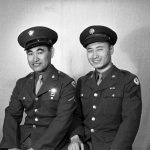
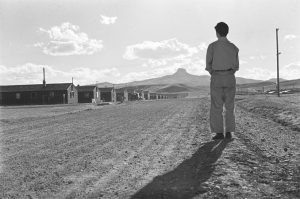 prisoners who felt service should be contingent upon the restoration of constitutional rights to all Japanese Americans, a simple yes or no answer was insufficient. In each of the camps, the draft became a divisive issue. While some prisoners felt military service was an opportunity to exemplify patriotism, others felt that constitutional rights should be restored before agreeing to mandatory service. I doubt if the situation would have ever really been resolved, except that the war ended.
prisoners who felt service should be contingent upon the restoration of constitutional rights to all Japanese Americans, a simple yes or no answer was insufficient. In each of the camps, the draft became a divisive issue. While some prisoners felt military service was an opportunity to exemplify patriotism, others felt that constitutional rights should be restored before agreeing to mandatory service. I doubt if the situation would have ever really been resolved, except that the war ended.
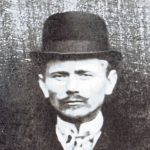
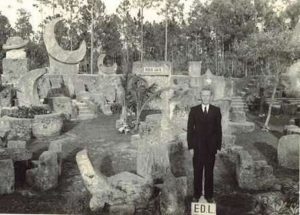 Edward Leedskalnin was a bit of an eccentric, which might have been caused by the sadness of lost love. When Edward was suddenly rejected by his 16 year old fiancée Agnes Skuvst in Latvia, just one day before the wedding, he decided to immigrate to America. Once there, he came down with allegedly terminal tuberculosis, but was spontaneously healed. He believed that magnets had some effect on his disease. I don’t know about that part, but he lived much longer that he was ever expected to.
Edward Leedskalnin was a bit of an eccentric, which might have been caused by the sadness of lost love. When Edward was suddenly rejected by his 16 year old fiancée Agnes Skuvst in Latvia, just one day before the wedding, he decided to immigrate to America. Once there, he came down with allegedly terminal tuberculosis, but was spontaneously healed. He believed that magnets had some effect on his disease. I don’t know about that part, but he lived much longer that he was ever expected to.
Leedskalnin decided to build himself a home where he could live out his years in solitude. The resulting “home” was eventually names Coral Castle, but was originally named “Ed’s Place.” Leedskalnin originally built the castle in Florida City, Florida, around 1923. Florida City, which borders the Everglades, is the southernmost city in the United States that is not on an island. It was an extremely remote location with very little development at the time. Leedskalnin built the castle by himself, out of Oolite Limestone. Edward spent more than 28 years building Coral Castle, refusing to allow anyone to view him while he worked. A few teenagers claimed to have watched his work a few times and reported that he had caused the blocks of coral to move like hydrogen balloons. The only tool that Leedskalnin spoke of using was a “perpetual motion holder”. The stones are fastened together without mortar. They are set on top of each other using their weight to keep them together. The craftsmanship detail is so skillful and the stones are connected with such precision that no light passes through the joints. The 8-foot tall vertical stones that make up the perimeter wall have a uniform height. Even with the passage of decades the stones have not shifted.
Leedskalnin purchased the land from Ruben Moser whose wife had assisted him when he had a very bad bout with tuberculosis. The castle remained in Florida City until about 1936 when Leedskalnin decided to move and take the castle with him. He renamed it “Rock Gate.” The move was an even more amazing feat the the first building of the castle. Its second and final location has the mailing address of 28655 South Dixie Highway, Miami, FL 33033, which now appears within Leisure City but which is actually unincorporated county territory. He reportedly chose relocation as a means to protect his privacy when discussion about developing land in the original area of the castle started. He spent three years moving the component structures of Coral Castle 10 miles north of Florida City to its current location outside Homestead, Florida.
At Florida City, Leedskalnin allowed visitors to the castle, charging them ten cents apiece to tour the castle grounds, but after moving to Homestead, he asked for donations of twenty five cents. Nevertheless, he let visitors enter free if they had no money. There are signs carved into rocks at the front gate to “Ring Bell Twice.” He would come down from his living quarters in the second story of the castle tower close to the gate and conduct the tour. Leedskalnin never told anyone who asked him how he made the castle. He would simply answer “It’s not difficult if you know how.” When Leedskalnin became ill in November 1951, he put a sign on the door of the front gate “Going to the Hospital” and took the bus to Jackson Memorial Hospital in Miami. Leedskalnin suffered a stroke at one point, either before he left for the hospital or at the hospital. He died twenty-eight days later of Pyelonephritis (a kidney infection) at the age of 64. His death certificate noted that his death was a result of “uremia; failure of kidneys, as a result of the infection and abscess.” While the property was being investigated, $3,500 was found among Leedskalnin’s personal belongings. Leedskalnin had made his income from conducting tours, selling pamphlets about various subjects (including magnetic currents) and the sale of a portion of his 10-acre property for the construction of U.S. Route 1. As Leedskalnin had no will, the castle became the property of his closest living relative in America, a nephew from Michigan named Harry. Coral Castle’s website reports that the nephew was in poor health and he sold the castle to an Illinois family in 1953. However, this story differs from the obituary of a former Coral Castle owner, Julius 
 Levin, a retired jeweler from Chicago, Illinois. The obituary states Levin had purchased the land from the state of Florida in 1952 and may not have been aware there was even a castle on the land. The new owners turned it into a tourist attraction and changed the name of Rock Gate to Rock Gate Park, and later to Coral Castle. In January 1981, Levin sold the castle to Coral Castle, Inc., for $175,000. The company retains ownership today.
Levin, a retired jeweler from Chicago, Illinois. The obituary states Levin had purchased the land from the state of Florida in 1952 and may not have been aware there was even a castle on the land. The new owners turned it into a tourist attraction and changed the name of Rock Gate to Rock Gate Park, and later to Coral Castle. In January 1981, Levin sold the castle to Coral Castle, Inc., for $175,000. The company retains ownership today.
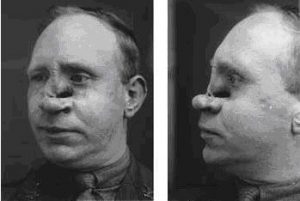 When people think of plastic surgery, the mind congers up images of everything from severe scar repair to vanity surgeries, but who originally came up with these procedures. Although the development of plastic surgery is popularly believed to have taken place in modern times, the origins of plastic surgery are very old. In the early part of the 1400s, the nose received the most attention from the early plastic surgeons. One of the first procedures for reconstructing the nose, a primitive precursor to the nose job, is attributed to a surgeon called Antonio Branca.
When people think of plastic surgery, the mind congers up images of everything from severe scar repair to vanity surgeries, but who originally came up with these procedures. Although the development of plastic surgery is popularly believed to have taken place in modern times, the origins of plastic surgery are very old. In the early part of the 1400s, the nose received the most attention from the early plastic surgeons. One of the first procedures for reconstructing the nose, a primitive precursor to the nose job, is attributed to a surgeon called Antonio Branca.
After that era, Plastic surgery had to wait until the late 18th century for the next significant advance in its history…the skin graft. And ironically the breakthrough came from rediscovering a procedure developed in ancient India. The severe-looking skin graft procedure was rediscovered in an ancient book called the “Sushruta Samhita,” dating back to 8th century BC. There hidden in the book’s 184 chapters was a technique using a leaf-shaped flap from the forehead to 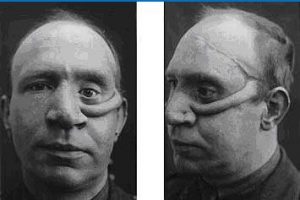 reconstruct the nose. The technique was published in the ‘Gentleman’s Magazine of Calcutta’ in October 1794 and it soon became widely used. It was known as the “Indian Method”.
reconstruct the nose. The technique was published in the ‘Gentleman’s Magazine of Calcutta’ in October 1794 and it soon became widely used. It was known as the “Indian Method”.
While these methods undoubtedly had a great impact on the history of plastic surgery, it would be another event that would have one of the biggest impacts on plastic surgery, and its methodology. That event was World War I. Shrapnel was the cause of many facial injuries during world War I, and unlike the straight-line wounds inflicted by bullets, the twisted metal shards produced from a shrapnel blast could easily rip a face off. Harold Gillies, a surgeon, was horrified by the injuries he saw, and he immediately took on the task of helping these victims. He saw these men as more than victims. They were heroes, and that’s how he saw them. He knew he had to do something to help these men get back to a normal life. So, he pioneered early techniques of facial reconstruction in the process.
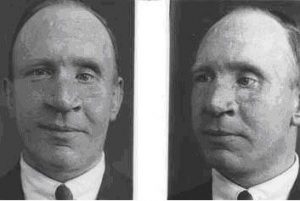 While these were great advances, it’s likely that the most significant improvements in the history of plastic surgery occurred in the last century. Several plastic surgery techniques were introduced during the world wars. Skin grafting techniques such as the “tubed pedicled graft,” were state of the art during World War I. Archibald McIndoe and Harold Gillies refined the techniques to treat severe facial burns. These staged procedures differed from earlier plastic surgery because they relied on the growth and development of a blood supply from the recipient bed into the grafted tissue over many weeks or months. While that all seems pretty normal these days, it was unheard of until then.
While these were great advances, it’s likely that the most significant improvements in the history of plastic surgery occurred in the last century. Several plastic surgery techniques were introduced during the world wars. Skin grafting techniques such as the “tubed pedicled graft,” were state of the art during World War I. Archibald McIndoe and Harold Gillies refined the techniques to treat severe facial burns. These staged procedures differed from earlier plastic surgery because they relied on the growth and development of a blood supply from the recipient bed into the grafted tissue over many weeks or months. While that all seems pretty normal these days, it was unheard of until then.

